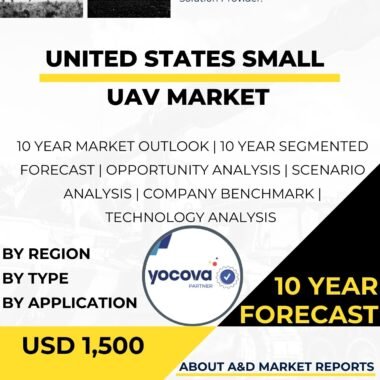Description
United States Aerostat Systems Market
United States Aerostat systems represent a significant component of military and homeland security capabilities. These tethered, balloon-like platforms are equipped with surveillance, communication, and reconnaissance payloads that provide valuable intelligence and situational awareness to support a range of military and civilian missions. This article will explore the development, deployment, and applications of aerostat systems in the United States, highlighting their contributions to national defense and security.
The concept of using aerostats for military purposes dates back to the 19th century when observation balloons were employed during the American Civil War for reconnaissance. However, the modern development of aerostat systems began in the mid-20th century, with advancements in materials and technology enabling more sophisticated and durable designs.
In the United States aerostat systems Market have been extensively used for various defense applications. One of the earliest and most well-known examples is the Tethered Aerostat Radar System (TARS), which was deployed along the southern border to support drug interdiction efforts in the 1980s. TARS utilized aerostats equipped with radars to detect low-flying aircraft and smuggling activities, contributing significantly to border security.
Aerostats are valued for their ability to operate at high altitudes, typically above 10,000 feet, offering extended line-of-sight and range for surveillance and communication purposes. The constant presence at high altitudes enables continuous monitoring of vast areas, making them ideal for border surveillance, maritime domain awareness, and early warning systems.
One of the key advantages of aerostats is their cost-effectiveness compared to other airborne platforms like aircraft and drones. They require minimal fuel consumption and can remain aloft for days or even weeks, providing persistent surveillance and reducing operational costs.
Aerostats are commonly equipped with various sensor payloads, including radar, electro-optical/infrared cameras, communications equipment, and signals intelligence (SIGINT) sensors. These payloads enable a wide range of capabilities, such as tracking moving targets, monitoring border activities, providing communications relay, and supporting disaster response operations.
The Persistent Threat Detection System (PTDS) is another prominent aerostat system used by the U.S. military. Deployed in Afghanistan and other regions, PTDS provides persistent surveillance and reconnaissance capabilities to support counterinsurgency and force protection efforts. PTDS aerostats have been instrumental in detecting enemy activities and providing valuable intelligence to ground forces.
In addition to military applications, aerostat systems play a crucial role in homeland security. The Joint Land Attack Cruise Missile Defense Elevated Netted Sensor System (JLENS) is an integrated aerostat-based surveillance and early warning system designed to detect and track airborne threats, including cruise missiles and other aerial threats. JLENS has been used to protect critical infrastructure and enhance air defense capabilities.
Aerostat systems have also been employed in disaster response and humanitarian assistance efforts. During natural disasters, such as hurricanes and floods, aerostats equipped with communication relays have provided essential connectivity in areas where traditional communication infrastructure has been damaged or disrupted.
Despite their advantages, aerostat systems face certain limitations and challenges. They are susceptible to weather conditions, and strong winds can affect their stability. Additionally, their large size and tethering require designated launch and recovery sites, limiting their flexibility in deployment.
Furthermore, the U.S. military is continuously exploring ways to enhance aerostat systems’ capabilities and integrate them with other surveillance and reconnaissance platforms. This includes efforts to develop lighter and more durable materials, improve sensor technology, and integrate data from multiple sources into a comprehensive situational awareness picture.
In conclusion, aerostat systems play a critical role in the United States’ military and homeland security operations. Their persistent surveillance capabilities, cost-effectiveness, and ability to operate at high altitudes make them valuable assets in supporting a wide range of missions, from border security and counterinsurgency efforts to disaster response and air defense. While they face certain challenges, ongoing research and development efforts indicate the U.S.’s commitment to maximizing the potential of aerostat systems and maintaining their relevance in an ever-evolving security landscape.




